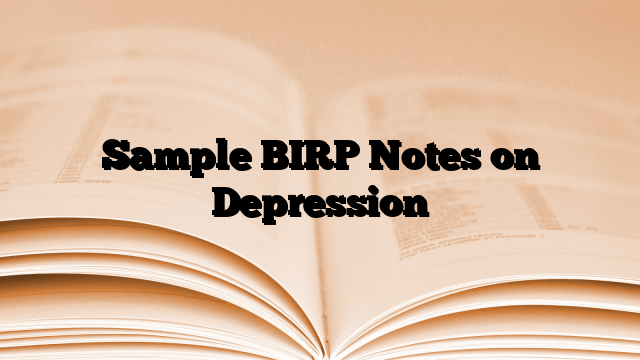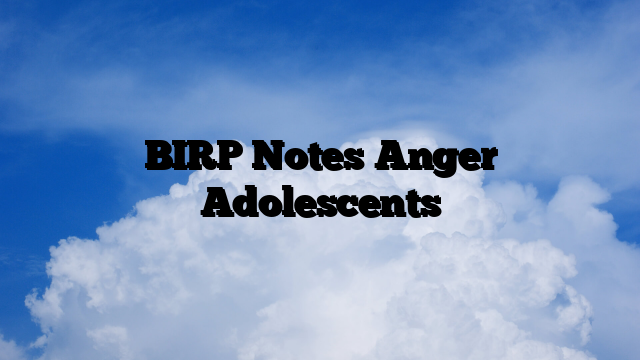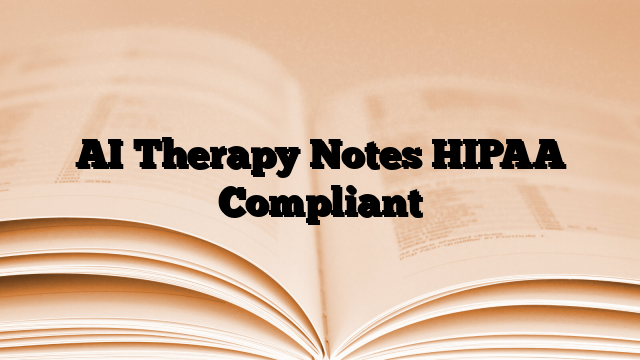Progress notes are the unsung heroes of the therapy world! These notes are like the breadcrumbs therapists leave behind, helping them find their way through the tricky world of mental health care. From the detailed DAP notes to the simple and straightforward SOAP notes, each type has its own unique way of capturing the essence of a session. Whether you’re a therapist looking to sharpen your skills or just curious about how mental health professionals keep everything straight, you’re in the right place to learn about the different types of progress notes. Today in this blog we will explore each and everything about DAP notes, so let’s get started.
So What is a Dap Note?
DAP note is a type of documentation used by mental health professionals to record and organize information about their sessions with clients. “DAP” stands for Data, Assessment, and Plan. The “Data” part refers to factual information and observed behaviors during the session, like what the client says and does. The “Assessment” section is where the therapist interprets or makes sense of the data, connecting it to psychological theories or the client’s treatment goals. Finally, the “Plan” part outlines the steps both the therapist and the client will take before the next session, which may include tasks, therapeutic exercises, or other interventions.
This method helps therapists keep clear and structured notes. By separating observations from interpretations and plans, it ensures that they capture all necessary details without confusion. These notes are crucial for tracking a client’s progress over time, planning future therapy sessions, and coordinating care with other health professionals. It also helps in maintaining consistency in treatment, especially when multiple caregivers are involved.
Further Explanation. (Breaking down each section of DAP)
Now let’s get into more detail for each section of DAP.
D in DAP
In DAP notes, the “D” stands for Data. This section includes all the objective and factual information gathered during a therapy session. It covers what the therapist observes directly, such as the client’s behavior, verbal statements, and emotional expressions. It also might include specific things the client reports about their experiences, symptoms, or issues since the last session. The Data part is crucial as it provides the foundational information needed for the therapist to make assessments and plan future interventions.
A in DAP
In mental health DAP notes, the “A” stands for Assessment. This section is where the therapist evaluates or interprets the data collected during the session. It involves analyzing the client’s behaviors, statements, and emotions to understand their condition better, the progress they are making, and any challenges they are facing. The Assessment might include linking the observed data to psychological theories, diagnosing issues, and relating symptoms to possible underlying causes. It’s a critical part of the notes as it helps in shaping the therapeutic approach and goals for the client’s treatment.
P in DAP
In DAP notes, the “P” stands for Plan. This section outlines the next steps in the treatment process. It includes the interventions that the therapist plans to implement, assignments or activities for the client to complete before the next session, and strategies to address the issues discussed. The Plan can also specify any changes or adjustments to the therapy based on the assessment and ongoing treatment objectives. It’s designed to provide a clear direction for both the therapist and the client to follow, ensuring that each session contributes effectively towards the client’s recovery and goals.
How long should be a DAP note?
The length of a DAP note can vary depending on the specifics of the session and the needs of the client, but generally, they are concise and focused. A typical DAP note might be anywhere from half a page to two pages long. The goal is to include all necessary information while being clear and to the point. Here’s how the length might break down by section:
- Data: This section should include concise, relevant details observed during the session, such as the client’s mood, notable statements, and behaviors. It should be detailed enough to paint a clear picture of the session without including unnecessary information.
- Assessment: This part interprets the data collected, relating it to clinical theories, the client’s treatment plan, or progress. It should be succinct, focusing on insights and conclusions derived from the session.
- Plan: The plan should outline specific, actionable steps for both the therapist and the client. It includes interventions, homework, and any referrals or coordination with other healthcare providers if necessary.
The key is to ensure that the notes are thorough enough to track the client’s progress and support continuity of care, without being overly verbose. They should be structured to allow any qualified professional to understand the treatment situation and decisions made during the session.
How to Write a DAP Note?
Now let’s get into the proper writing of a DAP note.
So writing an effective DAP note involves clear organization and focusing on essential information. Here’s a step-by-step process to help you structure and write these notes:
Data
First of all start by documenting the objective and subjective information observed during the session:
- Objective Data: Note observable facts and behaviors, such as the client’s appearance, body language, and verbal expressions.
- Subjective Data: Record the client’s self-reported feelings, thoughts, and concerns. This can include their description of symptoms, life events, or progress since the last session.
- Ensure this section is factual and free from interpretations.
Assessment
This section is your professional interpretation of the data:
- Analyze the client’s situation, behavior, and statements to determine their mental and emotional state.
- Link the observations to theoretical frameworks or diagnostic criteria if applicable.
- Discuss the client’s progress or any setbacks in relation to their treatment goals.
- It’s important here to provide clinical insights that justify the treatment direction and support any diagnoses.
Plan
Outline the next steps in the treatment plan:
- Specify any interventions or techniques that will be used in future sessions.
- Assign homework or activities for the client to complete outside of therapy, such as journaling, reading, or practicing specific skills.
- Note any changes to the treatment plan based on the assessment and data from the current session.
- Include plans for follow-up, such as scheduling the next appointment or coordinating with other healthcare providers.
Some Useful Tips:
- Be concise: Keep each section as brief as possible while including all necessary information.
- Use clear, professional language: Avoid jargon where possible, but ensure the language reflects professional mental health practice.
- Maintain confidentiality and professionalism: Be mindful of privacy and ethical considerations in documenting sensitive information.
- Regularly review and update: As treatment progresses, ensure that the notes reflect changes in the client’s condition and treatment plan.
By keeping these guidelines in mind, your DAP notes will be both thorough and efficient, serving as a valuable tool in the ongoing management of your client’s care.
DAP Notes Examples:
Now let’s look at a couple of good examples of DAP notes. These examples will help you have a better understanding of DAP notes. However, FYI these examples of DAP notes are fictional and for educational purpose only.
Client with Depression and Sleep Issues (Individual Therapy)
Client Name: Amanda S.
Date of Session: April 15, 2025
Therapist Name: Julia Harris, LCSW
Session Type: Individual (Telehealth)
Duration: 50 minutes
D – Data (What happened in the session)
Amanda reported a continued low mood throughout the week and rated her depression at 6/10, which she said is “a little better than last week.” She discussed recent difficulties with sleep, noting it now takes her “over an hour” to fall asleep most nights. She denied suicidal ideation or intent. Client did identify positive progress with journaling—she has been able to express her thoughts more freely and said, “it helps me clear my head a bit.”
Amanda became tearful when discussing a recent argument with her partner. She identified feeling “unsupported” and “invisible.” Therapist provided space for emotional processing and reflected on her patterns of self-blame and emotional withdrawal.
A – Assessment (Therapist’s clinical impressions)
Amanda presents as mildly depressed, but with increasing insight into her emotional experiences. She was more engaged today and showed motivation to continue journaling as a coping skill. Her sleep disruption appears related to racing thoughts and unresolved tension with her partner. Affect was appropriate; speech was clear and coherent. No risk of harm noted at this time. Emotional regulation remains a key challenge.
P – Plan (Next steps and interventions)
Continue weekly therapy with a focus on cognitive restructuring around self-worth and relationships. Introduce a new relaxation exercise (guided imagery) next session to support sleep hygiene. Client will track sleep patterns and bring her journal entries to share highlights next week. Therapist to explore relational patterns and attachment themes over the next two sessions.
Therapist Signature: _______________________________
Therapist Name & Credentials: Julia Harris, LCSW
Date of Documentation: April 15, 2025
Child Client with ADHD (Parent-Child Session)
Client Name: Marcus T.
Date of Session: April 18, 2025
Therapist Name: Kevin R. Miller, LPC
Session Type: Parent-Child (In-Person)
Duration: 45 minutes
D – Data (What happened in the session)
Marcus (age 9) and his mother attended session together. Mom reported ongoing struggles with homework completion and frequent emotional outbursts at home. Marcus was initially restless and distracted in the session—getting up from his seat multiple times. He responded positively to praise and a token reward system discussed in prior sessions.
Together, they reviewed the “Homework Zones” chart implemented last week. Marcus reported he “kind of likes it” and was able to complete homework 3 out of 5 days. He smiled when his mother praised him for trying harder this week.
Therapist modeled active listening techniques for the mother and coached her through using labeled praise and behavioral prompts. Marcus was responsive and smiled when praised for sitting still.
A – Assessment (Therapist’s clinical impressions)
Marcus demonstrated typical ADHD-related hyperactivity and inattention but responded well to structured behavior support. He appeared comfortable and engaged, especially when provided positive reinforcement. Parent’s consistency with strategies is improving. Family dynamic appears supportive, though mother expressed mild frustration. No behavioral red flags requiring further intervention were noted.
P – Plan (Next steps and interventions)
Continue behavioral parent training approach. Reinforce “Homework Zones” and add a visual timer to aid with task completion. Therapist will provide additional handouts on emotion regulation for Marcus. Next session will focus on impulse control strategies through play-based interventions. Weekly sessions will continue.
Therapist Signature: _______________________________
Therapist Name & Credentials: Kevin R. Miller, LPC
Date of Documentation: April 18, 2025
These examples of DAP notes offers a detailed account of the therapy session, providing clear and structured documentation that facilitates continuity of care and supports effective treatment planning.
The Bottom line:
DAP notes really are the backbone of good therapy sessions. They help therapists keep track of everything important, what happened, why it matters, and what’s next. By organizing sessions into Data, Assessment, and Plan, these notes make sure nothing slips through the cracks, helping clients get the best possible care. So, whether you’re just starting out or you’ve been at it for years, getting good at writing DAP notes can really make a difference in your practice. Here’s to clear notes and clearer paths to progress!






